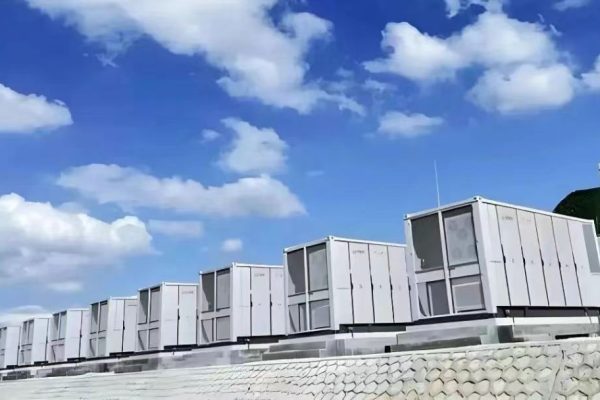Reliable Power Solutions When It Matters Most
1. Power as a Lifeline in Crisis
When natural disasters strike—earthquakes, floods, hurricanes, wildfires—the first things to fail are often grid power and communication infrastructure. In such moments, reliable electricity is not just a convenience—it’s a lifeline.
From powering medical equipment in field hospitals to running communication systems for rescue teams, Solar + Battery Energy Storage Systems (BESS) are becoming an essential part of modern emergency response strategies.
For small and mid-sized project developers, NGOs, and government agencies, deployable PV+Battery units offer a combination of mobility, reliability, and sustainability unmatched by diesel-only solutions.
2. Why Solar + Battery Is Critical for Disaster Relief
A. Independence from Fuel Supply Chains
In disaster zones, fuel deliveries can be delayed for days or weeks. Solar generation with battery storage provides a fuel-free, renewable alternative that can run critical loads without waiting for resupply.
B. Quiet and Low-Emission Operation
Unlike diesel generators, solar + battery systems operate silently—important in medical facilities, residential shelters, and night operations. They also reduce carbon and particulate emissions, improving air quality in already-stressed environments.
C. Rapid Deployment
Modern containerized or trailer-mounted PV+BESS units can be set up within hours, providing immediate relief in areas where the grid is down.
3. Key Applications in Emergency Scenarios
- Medical Tents & Field Hospitals
- Powering ventilators, refrigeration for vaccines, sterilization equipment.
- Emergency Communication Centers
- Keeping radios, satellite uplinks, and internet routers online.
- Water Purification Systems
- Driving pumps and filtration systems for safe drinking water.
- Temporary Shelters
- Providing lighting, charging points, and small appliance power.
- Command & Control Posts
- Running computers, monitors, and coordination tools.
4. System Design Considerations for Disaster Relief
A. Portability and Packaging
- Containerized systems for truck or ship transport
- Trailer-mounted units for rapid towing to remote sites
- Foldable PV arrays for compact storage and quick setup
B. Battery Selection
- LiFePO₄ batteries preferred for stability, long cycle life, and safety
- High cycle count to handle repeated daily charging during prolonged relief efforts
- Optional hot-swappable battery packs for extended operations
C. Inverter and Load Management
- Hybrid inverters capable of PV + battery + generator input
- Built-in load prioritization to ensure critical equipment always has power
- Parallel operation for scaling capacity
D. Environmental Robustness
- IP-rated enclosures for dust, rain, and salt spray resistance
- Operating temperature range suitable for tropical heat or winter cold
5. Case Study: 50kWh Containerized BESS in Flood Relief
During recent flooding in Southeast Asia, a 50kWh solar + battery system was deployed to power:
- 20 medical beds in a field clinic
- Cold storage for 500 vaccine doses
- A satellite internet link for rescue coordination
Results:
- Operated continuously for 8 days without fuel deliveries
- Reduced generator runtime by 80%, saving over 500 liters of diesel
- Allowed 24/7 communications between rescue teams
6. Integration with Diesel Generators – The Hybrid Approach
While solar + battery is powerful, full off-grid autonomy is not always practical during peak demand. A hybrid approach allows:
- Diesel generator backup for cloudy days or high-load events
- Battery smoothing to reduce generator cycling and fuel consumption
- Continuous power without downtime during battery charging
7. Maintenance and Training for Field Use
Disaster zones are unpredictable. Systems should be designed for easy maintenance by non-specialists:
- Clear visual indicators for battery state of charge
- Modular components for easy swap-out
- Basic troubleshooting guides in multiple languages
Training local or NGO staff before deployment ensures the system can be operated safely and effectively.
8. Long-Term Benefits Beyond Disaster Relief
Once an emergency passes, PV+BESS units can be redeployed for:
- Remote community electrification
- Mobile events and field work
- Backup power at hospitals or schools
This extends the return on investment and ensures equipment is not sitting idle between disasters.
9. Buying Considerations for Relief Agencies and SMEs
When procuring a solar + battery solution for emergency use, focus on:
- Proven field experience – Has it been deployed in real disaster zones?
- Certifications and compliance – Meets safety and transport regulations
- After-sales support – Remote monitoring and troubleshooting capability
- Scalability – Can capacity be increased if needed?
10. Reliable Power When It’s Needed Most
Solar + battery storage is no longer an optional add-on for disaster relief—it is becoming a core element of modern emergency response planning.
With the ability to provide quiet, clean, and reliable electricity independent of fuel supply chains, these systems empower medical teams, communication units, and relief workers to operate effectively even in the most challenging conditions.
For suppliers and integrators, focusing on deployable, durable, and easy-to-use PV+BESS packages can open valuable partnerships with NGOs, governments, and emergency response organizations worldwide.









